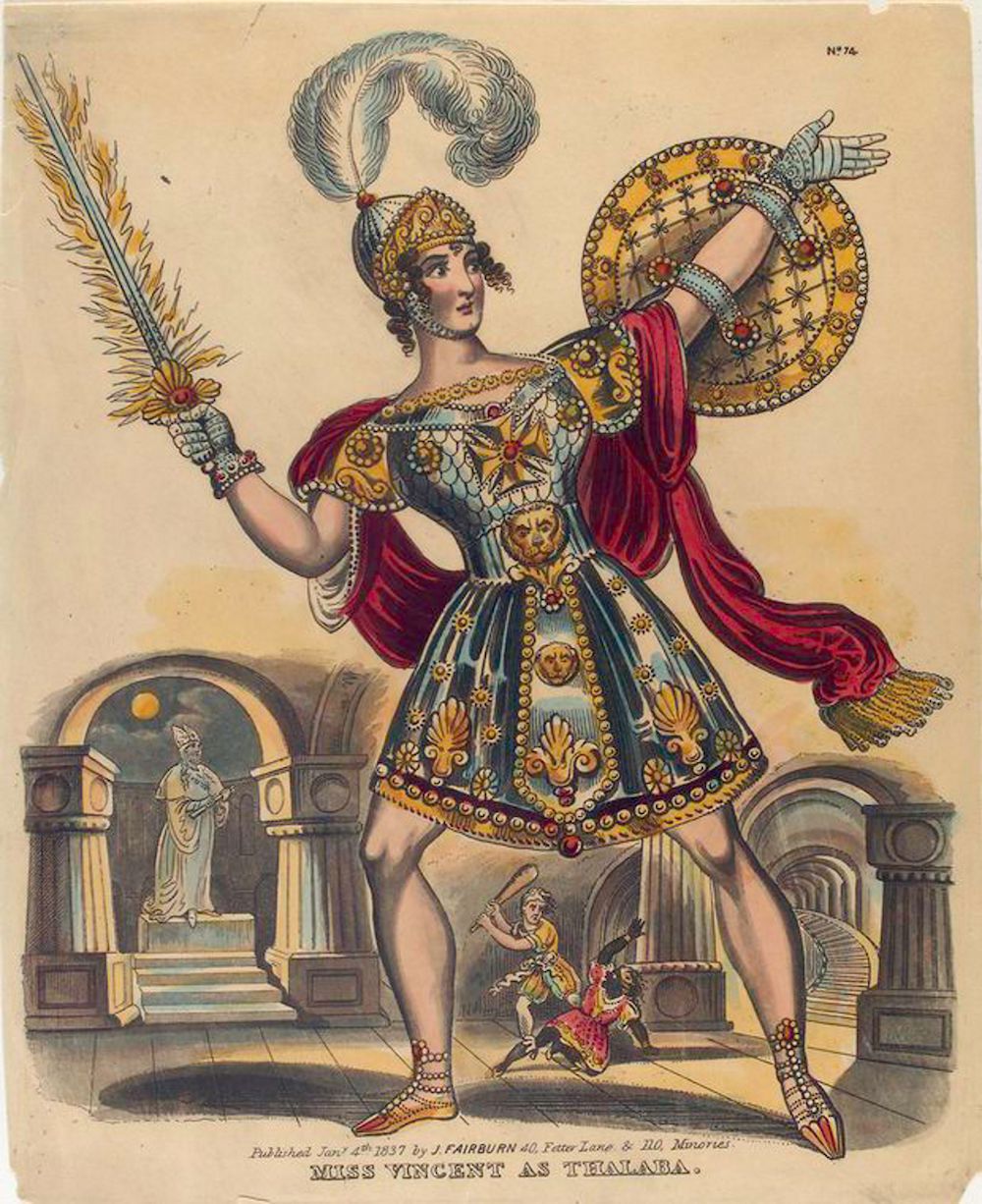‘Jane Eyre’ Goes to the Theatre

In February 1848, Currer Bell wrote to her publishers in London. The author of Jane Eyre had learned of its production at the Victoria Theatre in Lambeth, commonly known as the Old Vic. Holding strong views on dramatic art – she was unimpressed with William Macready’s ‘artificial’ Macbeth – Charlotte Brontë worried that ‘all would be woefully exaggerated and painfully vulgarised’. What, she asked, would this ‘minor’ house make of her heroine and Mr Rochester? Billed as Jane Eyre; or, The Secrets of Thornfield Manor, the first ever staging of a Brontë novel starred the Victoria’s principal actress and co-manager Eliza Vincent. Playing Rochester was Newton ‘Bravo’ Hicks, an actor of fine physique, commanding voice and ‘agile as a tiger’.
Published just four months earlier, the speed of Jane Eyre’s transition to the stage was not unusual. With metropolitan theatres hungry for new material, adaptations of novels formed a staple part of their ever-changing programmes. Moreover, in dramatising the ‘celebrated’ work of Currer Bell, the Vic was following the market. If one reviewer considered the novel ‘moral Jacobinism’, and George Eliot thought parts of it read like police reports, the main theatrical newspaper, the Era, was not alone in recognising a powerfully original work.
Born a year before Brontë in 1815, Vincent, the daughter of a Blackfriars newsvendor, excelled at playing relatable female leads: women of humble birth who, while subject to all kinds of vicissitudes, remained dauntless, bright and warm-hearted. Billed as the ‘acknowledged heroine of domestic drama’, the local girl made good was resilience and agency personified. But if the story of Jane’s arduous journey to happiness suited Vincent perfectly, matching finely wrought narrative to the demands of the Vic’s core audience required a significant act of creative licence.
Here Vincent turned to John Courtney, an actor-turned-writer who specialised in theatrical adaptation. Though some of his work was seen in the West End, including a version of Samuel Richardson’s Clarissa, he mostly catered to venues like the Vic.
Reflecting its darkly mysterious subtitle, Courtney’s three-act melodrama focused heavily on events at Thornfield, eliding the early chapters of Jane’s childhood. Yet while the action here is brief, it provides us with Betty Bunce, Joe Joker and Sally Suds. All inventions of Courtney, this trio of servants regard Lowood, the oppressive school for orphans to which Jane was sent, as a kind of Botany Bay and, like the young protagonist, they yearn to get away.
Partly a source of crowd-pleasing comedy and banter, the trio also embody resistance to misused authority. Together they confront the school’s bullying director, Mr Brocklehurst, roughly setting about him with brooms, and when a beadle attempts to restore order he is plunged into a water butt. With the latter played by the clown Charles Morelli, officialdom is literally made a fool of; according to the Era, the audience roared with laughter at this knowing mix of slapstick and satire.
The cause of this disturbance has been Jane’s defiance of Brocklehurst. In another departure from the novel, her silent suffering is replaced by a rousing speech: ‘Charity … ’tis a monstrous mockery of it, ’tis persecution on the helpless and unprotected … you should blush to hold such feelings as inhabit your cold and uncharitable heart.’

Rochester has a soliloquy as moody as he is in the novel – ‘the wind shakes the gables of these old towers’ – and Thornfield Manor (Hall in the original) is just as gothic; within moments of Jane’s arrival she confesses to a ‘thrill of fear’. But Courtney also continues to invent new working-class characters, such as the chorus-like footman Sam Small. Betty Bunce and Joe Joker also return. Having escaped Lowood’s tyranny at the same time as Jane, Betty has found work in the nearby town of Millcote, neatly offering a chance to make fun of local politics, while Joe is now Rochester’s coachman. These demotic guardian angels will prove crucial to Jane’s future happiness.
In contrast to the visibility of such figures, with the exception of Mr Rochester the more upper-class inhabitants of the novel only exist offstage. Here the well-born are the marginal. At the same time, however, Rochester’s gentlemanly authority wins the instant respect of Joe. In keeping with the original story, the fire that consumes Thornfield is set by Rochester’s wife Bertha (cast as the ‘Maniac’ in the show’s playbills), but it is the courageous servant who rescues the master.
Events then largely follow the plot of the novel until, learning of the fire and Rochester’s blindness, a newly empowered Jane determines to claim her true love. In a final invented scene, designed for a typical display of Vincent pluck, she finds Bertha’s maddened brother trying to kill Rochester. Fending off the would-be assailant, Jane in turn is rescued by Joe. Within the populist ordering of the Vic’s world, Rochester needs the orphaned and the lowly as much as they need him.
Had she made it to the Vic, what would Brontë have witnessed? Certainly the reviews judged it a well-mounted piece with Hicks and Vincent showing taste and feeling. The Morning Advertiser considered it a ‘very judicious mélange’. In the second week of its run it played alongside Romeo and Juliet, so perhaps not the ‘rant and whine’ that Brontë envisaged. Its stageability established, in 1849 a five-act version of Jane Eyre was produced in New York. Dozens more adaptations have of course followed, including this year at the Internationaal Theater Amsterdam. But in travelling with their local heroine to Thornfield Manor, it was the everyday playgoers of Lambeth who enjoyed the experience first.
Stephen Ridgwell researches Victorian and Edwardian cultural history.
